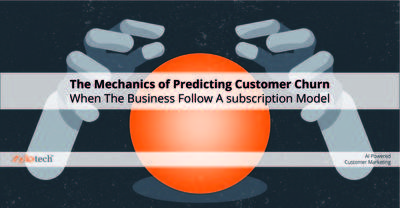Removing “Marketer-Managed” from the CDP Definition
August 7, 2018Back in April 2017, I raised the question of changing the CDP Institute’s definition of CDP from “marketer-managed system” to “packaged software” or something similar. My decision then was to keep “marketer-managed”, largely because the primary buyers of CDPs were marketers.
Times change and I think we’re now due to make the switch. So I’ll hereby announce a tentative new definition of: “A Customer Data Platform is a packaged system that creates a persistent, unified customer database accessible by other systems.”
The main reason for the change is that over the past year I’ve consistently found myself substituting “packaged system” for “marketer-managed” when I try to explain CDP. “Packaged system” relates more closely than “marketer-managed” to the prebuilt components and configurability that give CDP its advantages over custom development. The contrast with custom-built systems is the purpose for that portion of the definition.
“Marketer-managed” has also created some misperceptions that have led to unnecessary criticisms of CDPs. These include:
- “marketer-managed” means CDPs are used only by marketers but customer data should be shared throughout the organization. In practice, even a marketer-managed CDP could be used by any department. But there’s nothing inherent in CDP technology that means it needs to be managed by marketers in particular or even by business users (as opposed to IT) in general. CDPs are already sometimes bought by other groups, including both business departments and IT. And the CDP’s core ability to share its data means it’s just as easy to connect non-marketing systems as marketing systems. (Well, almost: CDPs rely on prebuilt connectors to simplify deployment. CDP vendors have built most of their connectors to marketing systems since that’s what their clients commonly want. But, again, there’s nothing to prevent anyone from building connectors to other systems as needed.)
- “marketer-managed” means IT is not involved. This was never possible because IT always controls access to corporate data sources and destination systems. Beyond that, IT is always involved in CDP purchase decisions, at least as group that must approve any choice. But IT usually has a role beyond those bare minimums because it’s the group that best understands company data and is thus best placed to help CDP vendors use it effectively. It’s true that CDPs reduce the technical work needed to deploy unified database (a benefit of being a “packaged system”) and that the CDP vendor’s own technical team or partners often take on much of the remaining labor. But using the CDP to make an end run around corporate IT was never an option, even if anyone wanted it to be.
The change also reinforces a point that’s increasingly important: the distinction between Customer Data Platforms as a class of system (“CDP-as-a-product”) and customer data platforms as a component in a corporate IT architecture (“CDP-as-a-function”). CDP products are stand-alone packaged systems that are one way to build a unified customer database. Other ways include enterprise data warehouses and modules within integrated software suites or marketing clouds. The distinction matters because each approach has advantages and disadvantages and buyers can compare only these if they recognize the difference exists. As developments such as privacy regulations and digital transformation make corporate IT groups increasingly interested in unified customer data, there will be more alternatives to consider and more need to understand how these compare with CDP products. Removing “marketer-managed” from the definition will also help corporate IT departments realize that CDP products are an option they should consider.
The main disadvantage of the change is that it obscures the focus of CDP on marketing applications. It’s not just that CDPs are still primarily bought by marketers. In addition, many CDP vendors have designed their systems with marketing-specific capabilities such as segmentation, predictive analytics, and message selection. Indeed, most of the industry’s recent growth has come from vendors with integrated marketing features. So you might think the definition should be made more marketing-focused, not less. Or, that we should replace “marketer-managed” with a combination such as “marketer-oriented packaged system”.
That’s tempting but I think it would be a mistake. Plenty of software used by marketers isn’t marketer-specific: for example, predictive analytics and business intelligence tools are used by many departments. Other software that definitely is marketer-specific, such as marketing automation or recommendation systems, doesn’t explicitly reference marketers in its definition. In practice, marketers will look at the use cases and features associated with a product and they’ll recognize which CDPs that are aimed at them. The core function of the CDP is creating that unified customer database, which is something that most marketers easily recognize they need without being told it has marketing applications. Vendors who extend that value with marketing features such as personalization need to state that anyway, since those are not core CDP features. In short, putting something like “marketer-oriented” in the definition would add little value and might do harm by reintroducing the misperceptions we’re trying to prevent by removing “marketer-managed” in the first place. So it’s best to leave it out.
This still leaves open the question of exactly what should replace “marketer-managed”. Since the goal is to present a contrast against “custom-built”, the obvious choice seems to be “packaged software”. But that seems to imply on-premises installation, while many CDPs are delivered as a service. So “packaged system” appears to be a better choice.
Some people have suggested that “packaged” itself is problematic because it suggests end-user deployment, which again gives the false impression that IT isn’t involved. A better term might be “productized”, which is how many developers describe a system that started as a custom project and was later converted into something reusable. But “productized system” seems rather vague and “productized product” is just plain silly. “Productized solution” might be a viable alternative, since it implies a contrasts with “custom solution” (to my ears at least). But it’s pretty vague as well.
“Commercial off-the-shelf software” is an older industry term to distinguish custom software from packaged systems. But we don’t hear it much these days and shortening it to “commercial system” might suggest an unintended contrast against “open source system”. “Off-the-shelf” sounds even more packaged than “packaged” so forget that. Other suggestions have included “standalone product” or “dedicated product”. Those are accurate but shift the focus to the fact that CDPs are bought separately from other systems, which isn’t the main point we’re trying to convey.
Given all these considerations, I currently see “packaged system” or “productized solution” as the leading contenders. Of the two, I favor “packaged system” as sounding less like jargon. But I’m still open to alternatives. Please share your thoughts on the subject.


